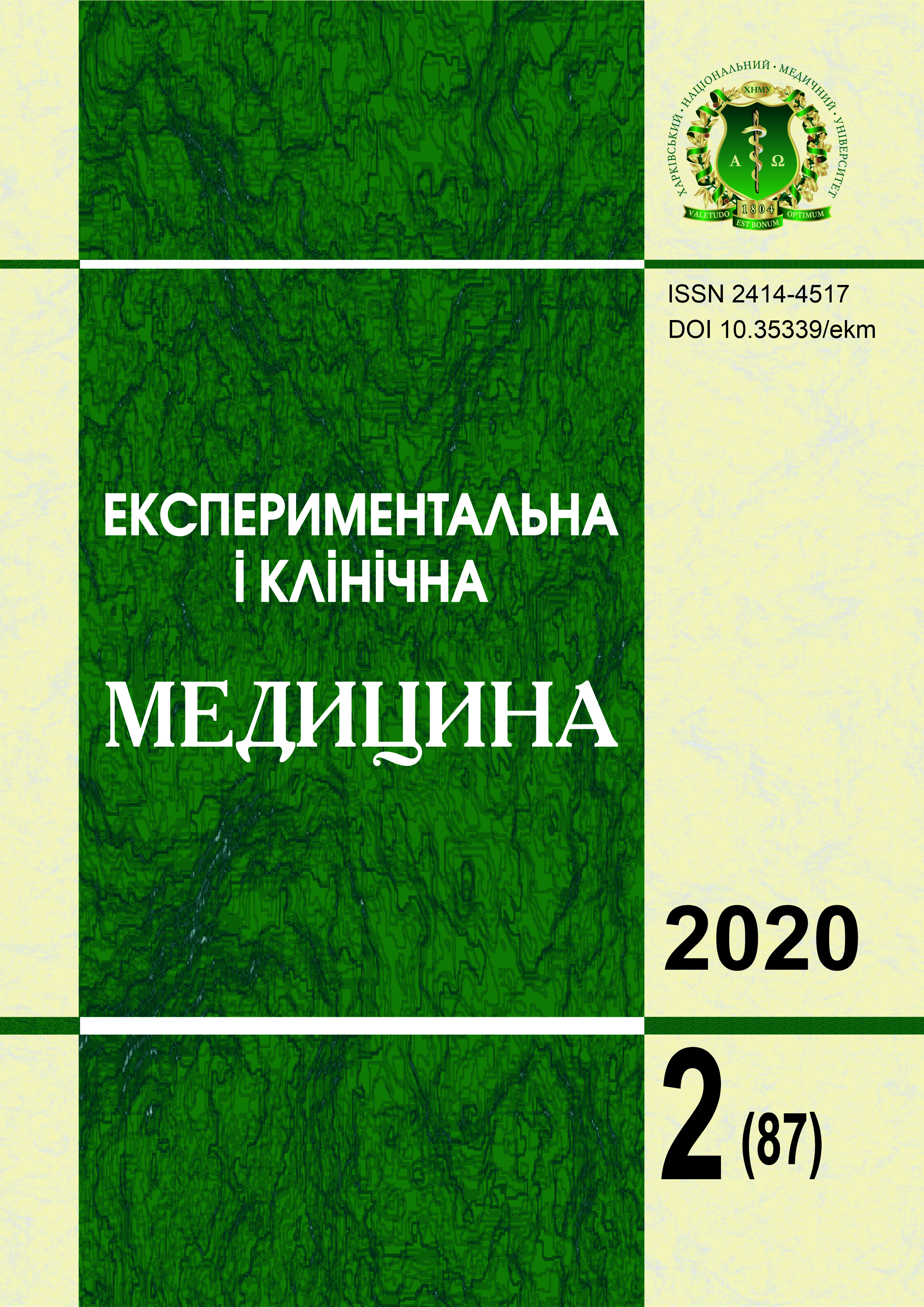Abstract
One of the debatable problems of modem combat injury surgery is surgical tactics against foreign bodies of firearms genesis. Most often it is metal foreign bodies with a significant content of iron. To develop a sound treatment tactic, a more in-depth study of the interaction of foreign bodies with soft tissues at the tissue, cellular, subcellular level is needed. One such method may be X-ray diffraction analysis. The aim of the work is to modernize the X-ray diffraction method to enable structural analysis of nano impurities in biological tissues, to obtain and generalize data on the degree of iron oxidation in capsules around foreign bodies of soft tissues of fire origin. The article presents the results of X-ray spectral analysis of 36 capsules of foreign bodies of soft tissues of firearms origin, removed from soft tissues by surgery within 2 months to 23 years after the gunshot wound. The removed parts of the tissues around the foreign body were represented by fibrous, adipose and muscle tissues with a capsule of varying degrees of formation. The detected oxidation of foreign bodies based on the analysis of metal fragments that contain a-Fe in the soft tissues of the wounded leads to the formation of lower FeO oxide, which occurs within 2.4±1.3 months, so that residual unoxidized iron on structural maps is almost undetectable. With an increase in the residence time of a foreign body in soft tissues from 2.4±2.3 months to 12.6±6.3, there is a transition to the intermediate Fe304 oxide and, finally, after 25.4±1.6 months to the higher Fe203 oxide. Removal of foreign bodies of soft tissues with a capsule during complication leads to recovery. The term «biological adaptation of the organism» is proposed in relation to foreign bodies of soft tissues. Features of change of structural structure of a capsule of a foreign body which allow to define time of stay of a foreign body in soft tissues are shown.
Keywords: X-ray diffraction analysis, foreign body capsule, gunshot wound, soft tissues.
References
Zarutskij, Ya. L., & Shudrak, A. A. (Eds.). (2014). Ukazaniyapo voyenno-polevoy khirurgii [Guide to Military Field Surgery]. Kiev.: SPD Chalchins'ka N. V, 396 p. [in Ukrainian].
Humanenko, Ye. K. (Ed.). (2016). Voienno-polevaia khirurhiia: uchehnik [Military-field surgery: a textbook], (2nd ed.). m: HEOTAR-Media, 768 p. [in russian].
Mikhaylov, I.F., Baturin, A.A., & Mikhaylov, A.I. (2015). Rentgenovskiye metody analiza sostava materialov [X-ray methods of analysis of the composition of materials]. Kharkiv: Izd-vo "Uchebnik NTU"KHPI", 204 p. [in Russian],
Klyaynshtyuk, K.Kh., Vener, B., Rikhter, K. et al. (1985). Rentgenofluorestsentnyy analiz [X-ray fluorescence analysis], Erkhardt X. (Ed.). (V.A. Fedorovich, Trans). m: Metallurgiya, 255 p. [in russian],
Abdelrazig, M. Abdelbagi, M.A., Gilani, M., Ali, E., & Sharf, E. (2017). Concentrations of trace elements in human hair as a biomarker expose to environmental contamination. International Journal of Scientific Research and Innovative Technology, vol. 4, No. 2, pp. 38-43.
Motevich, I.G., Strekal, N.D., Papko, N.M., Glebovich, M.I., Shulha, A.V., & Maskevicha, S.A. (2015). Application of x-ray fluorescence analysis to determine the elemental composition of tissues from different ovarian neoplasms. Journal of Applied Spectroscopy, vol. 82, No.1, pp. 98-103.
Peshak, V.P (Ed.). (2008). Gistologiya s osnovami gistologicheskoy tekhniki [Histology with the basics of histological technique]. Kiev: KONDOR, 400 p. [In Ukrainian].
Mikhaylov, I.F., Baturin, A.A., & Mikhaylov, A.I. (2015). Sposib vyznachennya vmistu vuhletsyu v stali. Deklaratsiinii patent na vinakhid No.98040, Ukraina, MPK GO IN 23/20 (2006.01) [Method for determination of carbon content in steel Natsionalnyy tekhnicheskiy universitet. Declarative patent for invention M 98040, Ukraine, IPC GO IN 23/20 (2006.01)]. No.u201412863, declared 01.12.2014, published 10.04.2015, bulletin No.7 [in Ukrainian].
Fahrni, C. J. (2007). Biological applications of X-ray fluorescence microscopy: exploring the subcellular topography and speciation of transition metals. Curr Opin Chem Biol., 11 (2), pp. 121-127.
Kubala-Kukus, A., Banas, D., Braziewicz, J., Majewska, U., Pajek, M., Wudarczyk-Mocko, J., et al. (2014). Analysis of Copper Concentration in Human Serum by Application of Total Reflection X-ray Fluorescence Method. Biol Trace Elem Res., 158 (1), pp. 22-28. DOI: 10.1007/sl2011-013-9884-4.

